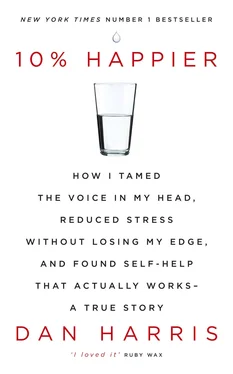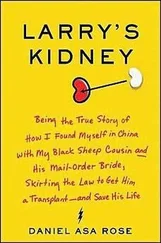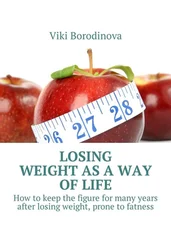Janice Marturano was on the bleeding edge of what had become an improbable corporate trend. Meditation classes had infiltrated not only General Mills but also Aetna, Procter & Gamble, and Target, where, as part of my Diane-approved field trip, I sat in on a weekly session at the corporate headquarters called “Meditating Merchants.” Mindfulness was also being taught in business schools and written about without derision in the Wall Street Journal and the Harvard Business Review . An article on Financial-Planning.com featured “meditation tips for advisors.” High-powered executives were using mindfulness to make sure that every confrontation didn’t escalate into a fight-or-flight event, and that every email, phone call, and breaking news alert didn’t derail their focus. This trend had become particularly hot in Silicon Valley, where meditation was now increasingly being viewed as a software upgrade for the brain. At Google, engineers were offered a class called “Neural Self-Hacking.” An article in Wired magazine referred to meditation as the tech world’s “new caffeine.”
It wasn’t just corporations hopping on this bandwagon, but also schools, prisons, the U.S. Forest Service, and, of course, the marines, who were actively eyeing meditation as a way to effect a sort of psychological “regime change” among their own troops. The final stop in my field trip was Camp Pendleton, where I met the reluctant meditator, Private First Class Lindemann.
The marines were initially interested in mindfulness because they thought it might help them deal with an epidemic of PTSD, but there was also hope that meditation could produce more effective warriors. The theory was that the practice would make troops less reactive, and therefore less vulnerable to the classic insurgent tactic of provoking the types of disproportionate responses that alienate the civilian population. What a counterintuitive notion: meditation as a way to deal with asymmetric warfare. As the woman who’d convinced the marines to conduct this experiment—Georgetown professor Liz Stanley—told me, “There is nothing incense-y about that. There just isn’t.”
While there was resistance at first, many of the marines ended up liking meditation. Even PFC Lindemann grudgingly came around. He told me he now found it easier to calm down after stressful situations. “At first, I was kind of skeptical,” he said, “but then you kinda start noticing a little bit of change. As you go further into it, you start understanding it.”
After shooting all of these stories, I, too, experienced a sudden “vision.” It wasn’t as dramatic as Jon Kabat-Zinn’s, but it did come at an unusual moment.
The producers of weekend GMA had decided to wire up a rental car with cameras, pack the anchors inside, punch in some GPS coordinates, and call it “America’s Cheapest Road Trip.” The conceit: have the cosseted on-air types drive themselves hundreds of miles to a seaside campground, pitch their own tents, and cook their own food; hilarity ensues. There was even a patina of news-you-can-use value to this ratings stunt because the economy was still in the tank, and the piece would contain a few useful nuggets of advice about how to do family vacations on a budget.
Somewhere between New York City and our final destination in Maryland, we stopped at one of those roadside plazas that have gas, greasy food, and bathrooms with fossilized filth dating back to the Mesozoic era. While I was waiting outside for Ron and Bianna to finish up inside, I decided to do a little walking meditation. About three steps into it, a family passed by and stared at me. I clammed up and pretended to check my BlackBerry.
That’s when I had my vision. Nothing too elaborate; I simply flashed on a world in which doing a zombie walk in public wouldn’t be slightly mortifying—where meditation would be universally socially acceptable. I felt nearly certain that this world was actually not too far off. Mind you, I wasn’t predicting a Tolle-esque “shift in planetary consciousness.” Nor was I forecasting that society would be overrun by “stream-entrants” and “non-returners” of the Joseph Goldstein variety. Instead, I pictured a world in which significant numbers of people were 10% happier and less reactive. I imagined what this could do for marriage, parenting, road rage, politics—even television news.
Public health revolutions can happen quite rapidly. Most Americans didn’t brush their teeth, for example, until after World War II, when soldiers were ordered to maintain dental hygiene. Exercise didn’t become popular until the latter half of the twentieth century, after science had clearly showed its benefits. In the 1950s, if you had told people you were going running, they would have asked who was chasing you. The difference with meditation was that if it actually took hold, the impact would go far beyond improving muscle tone or fighting tooth decay. Mindfulness, I had come to believe, could, in fact, change the world.
Of course, I hadn’t gotten into the whole meditation thing to have a global impact. My interests were parochial; I wanted relief from the ego. Now, though, I found myself in the funny position of believing deeply in a cause. I began attending conferences with names like Wisdom 2.0, Creating a Mindful Society, and Buddhist Geeks. I made new friends, like the beer-drinking, backslapping congressman from Ohio who wrote a book about mindfulness, and the former JPMorgan banker (a guy so successful even my brother was impressed) who started a new venture capital fund specifically designed to “bring mindfulness to scale.” I experienced a surge of excitement as I strategized with my new friends about how to expose meditation to a wider audience. We had conspiratorial meetings and meals; we exchanged emails; we hugged a lot.
In my view, the biggest impediment to Kabat-Zinn’s—and now my —vision becoming a reality was meditation’s massive PR problem. It was still mildly embarrassing to admit to most people that I meditated. This was largely because the practice was popularized in this country by Beat poets, robed gurus, and hippies—and that cultural hangover persisted. Stylistically, the presentation of the average meditation teacher struck me as a bizarre cousin of the stentorian monotone that TV reporters employ—an affectation to which I had sadly not been immune. Just as we in the news business too often relied on shopworn language—“Shock and disbelief in [fill in the blank] tonight . . .”—Buddhist teachers had their own set of hackneyed phrases. Stories were “shared”; emotions were “held in love and tenderness.” While the secular mindfulness people had dropped some of this lingo, they had replaced it with a jargon of their own, replete with homogenized, Hallmark-ized, irony-free terms like “purposeful pauses,” “meditating merchants,” and “interiority.” These people needed a Frank Luntz, that pollster who’d helped the Republicans rebrand the “estate tax” into the “death tax” and recast loosened pollution laws as “the Clear Skies Act.”
I wasn’t sure that I was the right Luntz for this job, but I figured it couldn’t hurt to pitch in. Ever since Bangor, I’d been obsessed with finding stories I liked and figuring out how to make them interesting to other people. Mindfulness, I now realized, was the best and potentially most impactful story I’d ever covered. In many ways, it was my craziest act of gonzo journalism. If it could help a monumental skeptic like me, I could only imagine what it could do for others, and I thought that if I could find a way to make it more broadly appealing, that would be a real service.
One-on-one preaching to my friends and family was still definitely a bad idea, but finding new ways to get the word out to a wider audience somehow seemed less obnoxious. To succeed, though, would require finding fresh ways to discuss the subject. It brought to mind a former colleague of mine from local news in Portland, Maine. He was a reporter named Bob Elliot, who used to post lists on the wall of the newsroom of what he called “lose ’ems,” clichéd words or phrases that were showing up too often in our newscasts. If any of the rest of us used a “lose ’em,” Bob would shoot us with a rubber band.
Читать дальше












